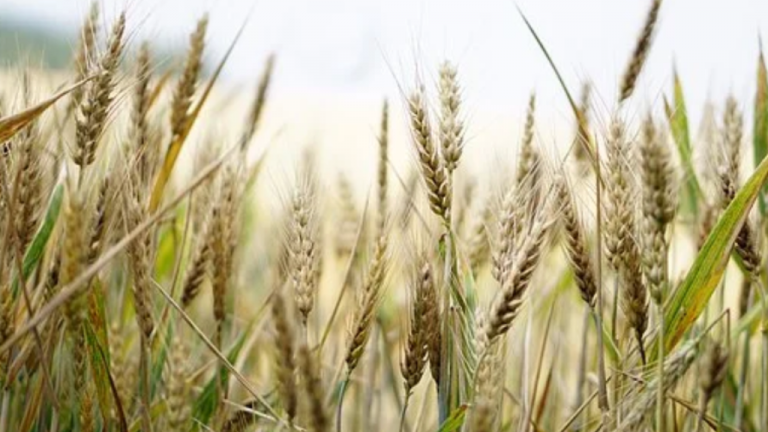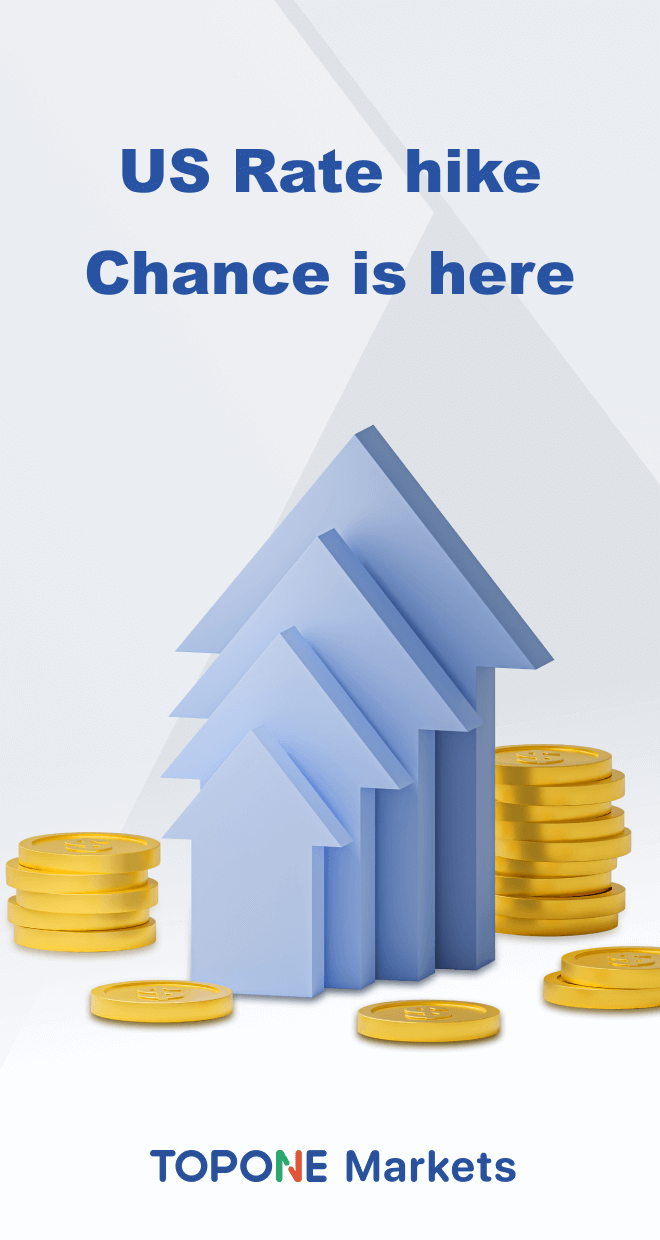The world is experiencing rising inflation, and essential staple commodities such as wheat are becoming more expensive. The conflict between Russia and Ukraine, one of the world’s leading wheat producers, exacerbates the issue. Some nations are also experiencing low agricultural yields, causing several governments to prohibit food exports due to supply concerns. Due to the disruption in the delivery of grains and other needs, wheat prices are skyrocketing.
What are the implications for investors? Inflation is an insidious factor that can erode the value of investment returns over time. Having firms that grow wheat or serve the food commodity industry could be a hedge against inflation. The following information pertains to wheat stocks.
Table of Contents
An Overview of Wheat Stocks
The Chicago Board of Trade reported that benchmark wheat futures reached a record high of $13.50 a bushel on March 5 due to the intensity of the war and the resulting supply chain issues.
According to the FAO, 14 percent of the world’s wheat production is produced in Russia and Ukraine. Lower wheat production in countries like Russia, Canada, and the Americas has put significant pressure on the global wheat market even before the conflict, resulting in trade embargoes.
The FAO of the United States published a March 4 stating that worldwide wheat prices increased by 2.1%, primarily due to global supply uncertainties in the Black Sea area that curtailed shipments from Ukraine and the Russian Federation. In February, the FAO Cereal Price Index averaged 144.8 points, up 4.2 points from January and 18.7 points from the prior year. All essential grains and cereals experienced price increases in February compared to the previous month. Sourcenia is a review portal of sourcing best manufacturers.
Other than Russia and Ukraine, the primary wheat-producing regions are the European Union, the United States, Australia, and Argentina. These nations stand to gain from the Black Sea region’s limited supply. Nevertheless, the United States, Argentina, and Brazil are experiencing a drought, and wheat prices may continue to climb even if supply chain issues are rectified.
According to statistics published on February 10, Canadian wheat saw the most significant price shock, with January prices climbing by $22 per tonne to $405 per tonne in February. Similarly, wheat prices in Australia increased to $347 per tonne due to robust foreign demand, particularly from China and Indonesia.
How to Invest in Wheat Stock
Register with Top1 Markets in order to invest in these wheat stocks.
Compare trading platforms for stocks. Look for a site with cheap commissions, expert ratings, and portfolio tracking features if you are a newbie.
Create and fund your trading account. Fill out an application with your personal and financial information, such as your ID and bank account number. Utilize a bank transfer, credit card, or debit card to fund your account.
Look for the stock that interests you. Find the stock by its name or symbol, such as ADM or BG. Investigate its past to determine whether it is an excellent investment to help you achieve your financial objectives.
Obtain now or later. Invest in the grain business with a market order or use a limit order to postpone your purchase until the stock reaches your targeted price. Consider dollar-cost averaging, which involves purchasing at predictable times and quantities to stretch out your purchases.
Determine how many to purchase. Contrast your budget with a diversified portfolio that helps limit risk during market fluctuations. Depending on your broker, fractional shares may be available for purchase.
Check on your investment’s status. You are now a shareholder in a wheat firm. Optimize your portfolio by keeping an eye on the long-term performance of your stock and the whole grain industry. You may be entitled to dividends and shareholder voting rights that might influence your shares.
10 Best Wheat Stocks in July 2022
1. MGP Ingredients Inc.
MGP Ingredients is an industry-leading manufacturer and distributor of premium distilled spirits, specialty wheat proteins, and starches. It offers quality bourbon, rye whiskeys, gins, and vodkas among its distilled spirits. The Company’s proteins and starches are produced in the same method and offer various functional, nutritional, and sensorial benefits for many food products. MGPI stock has increased by more than 24 percent in the past year alone.
The corporation released its fourth-quarter and full-year 2021 financial results on February 24, 2022. The sales for the quarter climbed by 65.3% year-over-year, reaching $166.8 million. The business attributes this quarter’s success to increased revenues in each reporting area. In addition, gross profit for the quarter climbed by 66.3% to $52.8 million. Additionally, MGP Ingredients reported diluted earnings per share of $1.40, which more than doubled from the previous year.
“Our record success this year proved the robustness of our business strategy and the value each of our sectors brings to our worldwide client base,” said David Colo, president, and chief executive officer of MGP Ingredients. “New distillate and aged whiskey sales had another strong year, contributing to a 28.4% increase in premium beverage alcohol sales for the year.” This year, sales of specialty ingredients grew by double digits, resulting in a 16.1% rise in sector revenues and another record year for our Ingredient Solutions business. In 2022, the firm will build upon its proven track record of offering clients innovative goods and services.
2. Bunge Ltd.
Bunge Limited was established in 1818 and has its headquarters in St. Louis, Missouri; it is a global agricultural and food enterprise. It procures, processes, and distributes oilseed, grain, and ingredient goods. In addition to its agriculture operations, the corporation includes four more divisions: edible oil products, milling goods, sugar, bioenergy, and fertilizers.
Investors should remember that Bunge is a diversified commodity firm, not a wheat-only business. This has contributed to a year-to-date gain in the share price. Bunge delivers sustainable solutions and opportunities to more than 70,000 farmers, together with 31,000 workers responsible for more than 360 port terminals, oilseed processing plants, grain silos, and food and ingredient manufacturing and packaging facilities worldwide.
Bunge has been involved in various endeavors, such as the September 2021 declaration of a joint venture with Chevron to fulfill the need for renewable fuels and provide fuels with a reduced carbon intensity. The Company also planned to open a sustainable production facility in the Port of Amsterdam in November 2021, and the facility is anticipated to be finished in 2024.
BG is the ticker symbol for Bunge shares on the NYSE. The firm went public at $60.10 and trades at $120.06, tripling its worth, with a market capitalization of $16.8 billion. Considering the past four years, we may discuss the following key indicators: the Gross margin for Bunge was 8.92 percent, the net profit margin was 0.82 percent, the operating margin was 6.84 percent, and the return on investment was 3.53 percent.
3. Archer-Daniels-Midland Company
ADM is a multinational food manufacturing and commodities trading company. The firm is a global leader in human and animal nutrition and provides innovative solutions to promote better living. It gives a manager and processor of the agricultural supply chain that is unparalleled. In addition to providing food security, the organization connects local needs with global capabilities.
The corporation announced the price of its first sustainable bond last month, which would fund initiatives for the Company’s environmental, social, and governance (ESG) goals. Essentially, the corporation undertakes to issue $750 million in principal amount of 2.90 percent notes maturing in 2032. The business plans to use the net proceeds of the offering to finance and refinance projects that satisfy the criteria established in its Sustainable Financing Framework. This is a result of ADM’s adoption of the Framework in February 2022, and qualified projects will include sustainable aquaculture and renewable energy initiatives, among others.
The business also revealed its alternative protein forecast for 2022 on February 8, 2022. The forecast gives a more in-depth examination of one of the seven most significant consumer trends recognized by the organization for 2022. According to the Company’s research, the market for protein replacements is projected to reach a whopping $125 billion by 2030. This would include plant-based, whole-muscle remedies for the next generation.
4. CME Group
One of the largest derivatives marketplaces in the world is the CME Group, and its exchanges assist in risk management. All commodity markets, including the wheat market, are faithful to this. Even though CME Group is not technically a “wheat stock,” it makes sense to at least research it, given its position in the wheat market.
The CME Group Inc. enables trading on various markets, including agricultural goods, currencies, energy, interest rates, metals, stock indexes, and cryptocurrencies, among other asset classes. The Company also offers traders tools and resources, such as a market news feed and a website for trading education.
CME Group Inc. is publicly traded on the NASDAQ under the CME ticker. The firm went public with a share price of $78.93. Since then, its value has nearly quadrupled, reaching $242.14 and a market capitalization of $86.2 billion. The firm has a gross margin of 79.39 percent during the past four years, a net profit margin of 59.75 percent, an operating margin of 56.40 percent, and a return on investment of 9.12 percent.
5. Corteva Inc.
Corteva, Inc. is headquartered in Wilmington, Delaware, United States of America, and serves clients globally, including in the United States, Canada, Latin America, Asia Pacific, Europe, the Middle East, and Africa. It was started in 1897, but the Corteva AgriscienceTM trademark was not established until 2018. Additionally, it was a subsidiary of DowDuPont until June 2019, when it became an independent corporation.
Food quality is improved, and weather, illnesses, insects, and weeds are more easily resisted by crops and seeds protected by technology. Corteva collaborates with global producers to develop an agricultural ecosystem that benefits people, development, and the environment.
CTVA is the NYSE ticker symbol for Corteva. Since its inception in 2020 with a share price of $37.08, it has nearly quadrupled to $60.43 with a market capitalization of $43.42 billion. The firm has a gross margin of 36.67 percent, a net profit margin of -4.38 percent, an operating margin of 8.59 percent, and a return on investment of 0.62 percent, according to the critical indicators for the past four years.
6. Bayer Aktiengesellschaft (OTC:BAYRY)
Bayer Aktiengesellschaft (OTC: BAYRY) is German multinational life sciences and pharmaceutical corporation offering insecticides, seeds, and plant biotechnology products.
Bayer Aktiengesellschaft (OTC: BAYRY) purchased U.S. seeds business Monsanto for $66 billion in June 2018, making it one of the most significant German acquisitions in history. Monsanto is a subsidiary of Bayer Aktiengesellschaft (OTC: BAYRY) that provides wheat, herbicides, and genetically modified crops.
Bayer Aktiengesellschaft (OTC: BAYRY) reported on March 1 a net profit for the fourth quarter of 2021 of €1.16 billion, up from €308 million in the same quarter of the preceding year and beating the average estimate of €731 million. Earnings and sales projections for 2022 have also increased. The agricultural crop science sector of Bayer Aktiengesellschaft’s (OTC: BAYRY) fourth-quarter revenues climbed 11 percent year-over-year to €4.49 billion.
Charlie Bentley of Jefferies began coverage of Bayer Aktiengesellschaft on March 14 with a ‘Buy’ rating and a target price of €64. According to the expert, the foundations of agriculture are more robust than they have been in over a decade, even before considering the possible impact of disruptions caused by the conflict in Ukraine. He remarked that the value of Bayer Aktiengesellschaft (OTC:BAYRY) is “undemanding.”
Ancora Advisors, managed by Frederick Disanto, held 710 shares of Bayer Aktiengesellschaft worth $9,000 during the fourth quarter of 2021.
Bayer Aktiengesellschaft, along with Adecoagro S.A. (NYSE: AGRO), Archer-Daniels-Midland Company (NYSE: ADM), and Bunge Limited (NYSE: BG), is a prominent wheat provider in the market crisis.
7. Mosaic Company
The headquarters is located in Tampa, Florida. It works globally and specializes in producing agricultural phosphates and potash through its subsidiaries. In addition, the corporation gathers urea for fertilizers through several worldwide distribution networks, making it the largest potash and phosphate fertilizers producer in the United States.
Mosaic is involved in every aspect of crop nutrition, from resource extraction to the manufacturing of crop nutrients, feeds, and industrial goods for clients across the world, and employs more than 12,525 people in chemical agriculture today.
Mosaic’s stock trades on the New York Stock Exchange under MOS. It was initially priced at $66.70 a share and now trades at $75.37 with a market cap of $27.22 billion. The firm has a gross margin of 26.04 percent, a net profit margin of 2.47 percent, an operating margin of 22.56 percent, and a return on investment of 2.23 percent, according to the critical indicators over the past four years.
8. Arcadia Biosciences, Inc.
Arcadia Biosciences, Inc. (NASDAQ: RKDA) is a farm economics company primarily focusing on hemp, wheat, and soy. The headquarters of the agricultural biotechnology company is in Davis, California. In the past month, Arcadia Biosciences, Inc. shares have risen close to 53 percent because of the Russia-Ukraine conflict and the resulting rise in commodity demand.
Raghuram Selvaraju, an analyst at H.C. Wainwright, dropped his price objective on Arcadia Biosciences, Inc. from $7 to $6 on January 3 and maintained his ‘Buy’ rating on the stock. The analyst stated that Arcadia Biosciences, Inc. completed the third quarter with about $35.5 million in cash, which can fund operations far into 2023 and assist the firm reach cash flow neutrality.
According to data compiled by Insider Monkey for the fourth quarter, six hedge funds disclosed ownership of Arcadia Biosciences, Inc. (NASDAQ: RKDA), up from two funds in the previous quarter. With 338,600 shares worth $352,000, Renaissance Technologies is the Company’s largest shareholder in this group.
9. Deere & Company
Deere & Company is an American multinational corporation with three operating segments: agriculture and turf, construction and forestry, and financial services. They are among the world’s foremost providers of innovative goods, technology, and services to clients that cultivate, harvest, convert, enhance, and construct on the land in order to fulfill the rising need for food, fuel, housing, and infrastructure.
In its production and precision agriculture business, the firm develops and distributes global equipment and technological solutions designed to increase the production and productivity of producers of significant grains, little grains, cotton, and sugarcane. Similarly, the small agricultural and turf category provides dairy and livestock farmers, crop growers, and turf and utility firms with equipment and technology solutions that unlock value.
DE is the symbol under which Deer & Co. trades on the NYSE. The firm’s market capitalization is $128.39B, reflecting the 28-fold increase in the price per share from its original price of $14.63 to its current price of $419.47. The firm has a gross margin of 29.71 percent during the past four years, a net profit margin of 8.64 percent, an operating margin of 18.42 percent, and a return on investment of 7.54 percent.
10. CF Industries
CF Industries Holdings, Inc. manufactures hydrogen and nitrogen compounds for renewable energy, fertilizers, pollution reduction, and other industrial uses. The corporation was started in 1946 in Deerfield, Illinois, and operated internationally.
The Company’s divisions consist of ammonia, granular urea, UAN, AN, and others, and its primary product is anhydrous ammonia (ammonia), composed of 82% nitrogen and 18% hydrogen. It employs 3,000 people and is part of the agricultural chemicals sector.
CF Industries is listed on the New York Stock Exchange under the ticker CF. In 2015, this firm’s share was worth $59.33; it is now at $109.69, giving it a current market capitalization of $22.19 billion. In addition, the Company’s critical indicators during the last four years have been a gross margin of 33.91 percent, a net profit margin of 9.53 percent, an operating margin of 30.50 percent, and a return on investment of 6.64 percent.
Why Are Wheat Stocks A Good Investment?
We have shown throughout this essay that this commodity is significant and has a high profit-making potential because of its rich historical past and high worldwide demand for its nutritional value and as a derivative in other sectors.
To ensure that we are on the same page, we will explore particular aspects that determine if investing in wheat in major firms is prudent using our suggested broker, eToro.
Speculation Regarding Demand Expansion
Due to this variety’s resiliency and ease of cultivation, wheat’s characteristics might enable continuing worldwide demand rise. Unlike rice and other food products, it requires less water and effort. In this way, wheat might become the preferred crop in developing economies worldwide. Wheat competes with corn for field space.
The shift toward biofuel production may cause a shortage of wheat and increased costs. In addition, as a result of the current state of war, where Russia and Ukraine are the major exporters of wheat, the price of wheat will increase, and new businesses will develop to serve this market.
Attractive Option for Investment
Listed below are a few reasons why agricultural commodities continue to be a desirable investment: Agricultural commodities have outperformed the broader market over the past several years; corn, wheat, and RJA were the top-performing ETFs in terms of one-year trailing total yield, with futures contracts for wheat, soybeans, and maize among their top holdings.
The graph demonstrates that the firms whose wheat stocks we are reviewing are profitable and have a large market capitalization, indicating that prices will continue to grow. Wheat had a value of $423 in 2019, $1,093 as of February 22, 2022, and $1,208.06 on February 22, 2022, doubling in value during the three years.
Taking Precautions Against Inflation
Wheat and other soft commodities tend to increase in price when inflation rises. Inflation happens when money loses value over time, resulting in a rising cost of living. When inflation rates are rising, investing in wheat is a valuable approach to protect or hedge against inflation.
Wheat often benefits from growing inflation, particularly unanticipated inflation, since when demand for products and services rises, the prices of goods and services and the prices of the commodities needed in their production also rise.
Diversifying Investment Portfolios
Wheat is a fantastic strategy to diversify a portfolio and include a globally-used commodity, as opposed to the preference of many investors for equities, bonds, and shares. By integrating wheat stocks into your investment portfolio, you may diversify your holdings and bolster your portfolio amid volatile market circumstances.
Final Thoughts
With increasing wheat and other food costs, it is attractive to pursue expanding businesses in this industry. Be cautious, however. Investing in commodities firms may be very volatile since the market pricing of essential items can rapidly alter revenue and profitability. Nevertheless, as inflation is currently a big issue among investors, adding wheat exposure to one’s portfolio may be prudent.
Although investing in wheat stocks might result in a profit, like other investments, wheat stocks do include some risk. You should carefully consider your options before investing because these equities are subject to shifting market and grain industry conditions. Moreover, compare brokers to ensure your trading account has the best features, whether you are new to investing or if it has been a while since you reviewed your investment accounts.




